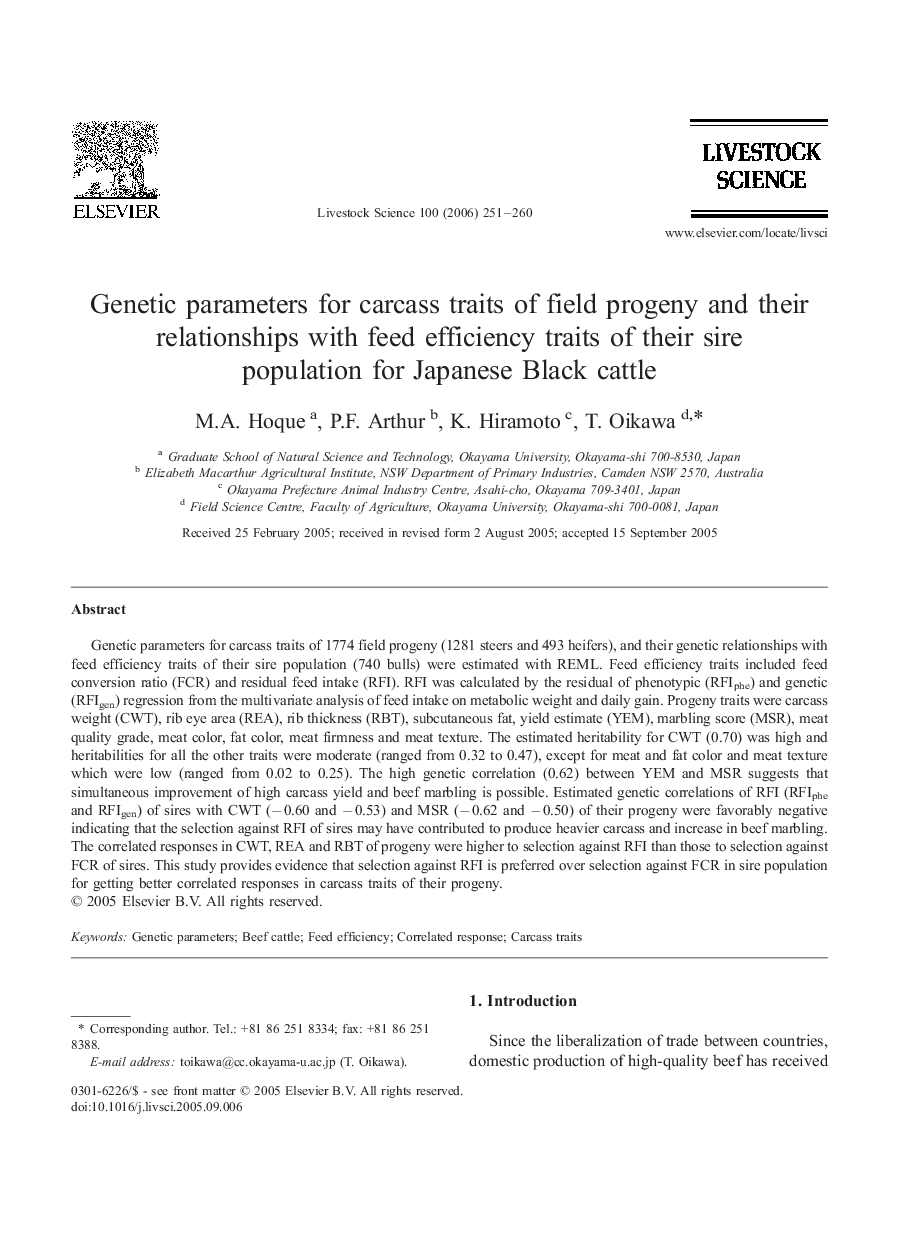| Article ID | Journal | Published Year | Pages | File Type |
|---|---|---|---|---|
| 2449165 | Livestock Science | 2006 | 10 Pages |
Genetic parameters for carcass traits of 1774 field progeny (1281 steers and 493 heifers), and their genetic relationships with feed efficiency traits of their sire population (740 bulls) were estimated with REML. Feed efficiency traits included feed conversion ratio (FCR) and residual feed intake (RFI). RFI was calculated by the residual of phenotypic (RFIphe) and genetic (RFIgen) regression from the multivariate analysis of feed intake on metabolic weight and daily gain. Progeny traits were carcass weight (CWT), rib eye area (REA), rib thickness (RBT), subcutaneous fat, yield estimate (YEM), marbling score (MSR), meat quality grade, meat color, fat color, meat firmness and meat texture. The estimated heritability for CWT (0.70) was high and heritabilities for all the other traits were moderate (ranged from 0.32 to 0.47), except for meat and fat color and meat texture which were low (ranged from 0.02 to 0.25). The high genetic correlation (0.62) between YEM and MSR suggests that simultaneous improvement of high carcass yield and beef marbling is possible. Estimated genetic correlations of RFI (RFIphe and RFIgen) of sires with CWT (− 0.60 and − 0.53) and MSR (− 0.62 and − 0.50) of their progeny were favorably negative indicating that the selection against RFI of sires may have contributed to produce heavier carcass and increase in beef marbling. The correlated responses in CWT, REA and RBT of progeny were higher to selection against RFI than those to selection against FCR of sires. This study provides evidence that selection against RFI is preferred over selection against FCR in sire population for getting better correlated responses in carcass traits of their progeny.
